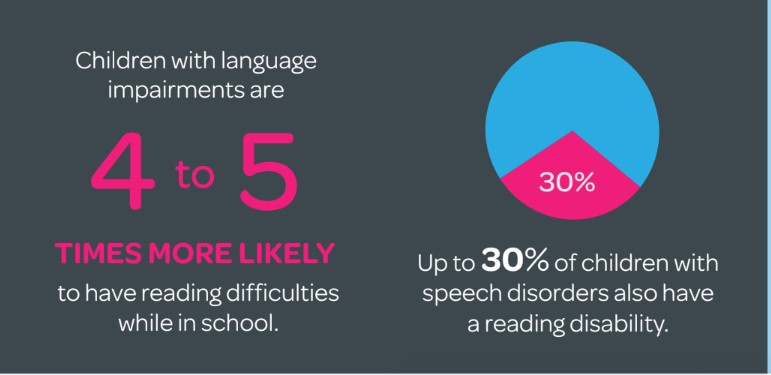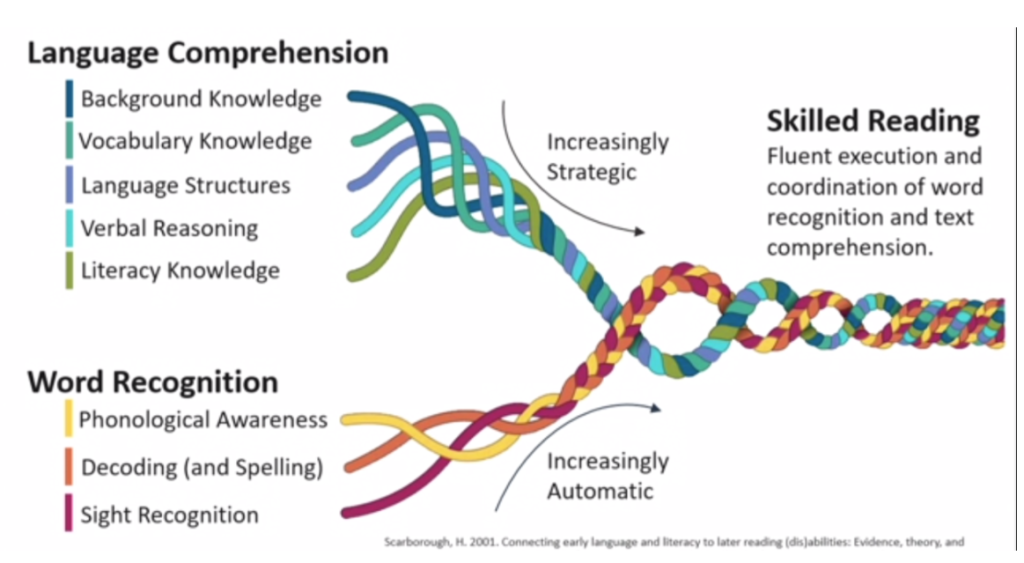Language and literacy skills enable us to communicate with others and learn about the world. Early identification of reading difficulty along with early intervention are essential for helping children to develop communication skills they need to succeed at home and at school.

Speech Audiology Canada- Literacy Info Sheet
Oral Language and the Connection to Literacy
Reading and writing require competence. Children need to build oral language and develop word-recognition skills. The image of a “rope” provides an analogy of the process of reading and writing. It depicts the strands (skills) that contribute to fluency in reading and written expression (see image below.).

All of the above-mentioned strands need to be developed for a student to become a proficient and skilled reader and writer.
In primary grades, teachers focus on teaching students how to read (i.e. word recognition and decoding skills.) Because strong underlying oral language skills are needed to comprehend words and sentences, teachers strengthen students’ comprehension skills by reading aloud from books that have rich language and vocabulary but are too difficult for children to read themselves.
Ideally, a young person becomes a more-strategic reader over time. For example, a reader develops to the point where they rely on the context of a sentence to decode and understand new words. They use their background knowledge to make sense of new information; this allows them to make self-to-text, text-to-text, and text-to-world connections. In short, they apply higher-level thinking skills to interpret what they read.
Proficient readers do not struggle with word recognition; they become increasingly automatic (ie. fluent) with practice. However, students with poor word recognition skills often put so much effort into reading that they lose the meaning of what they read. The same is true for writing. Children with weak speaking and listening skills often display deficits in writing as well. The need for proper spelling, punctuation, capitalization and the expected “formal tone” of written work only complicate the writing process for these young people.

